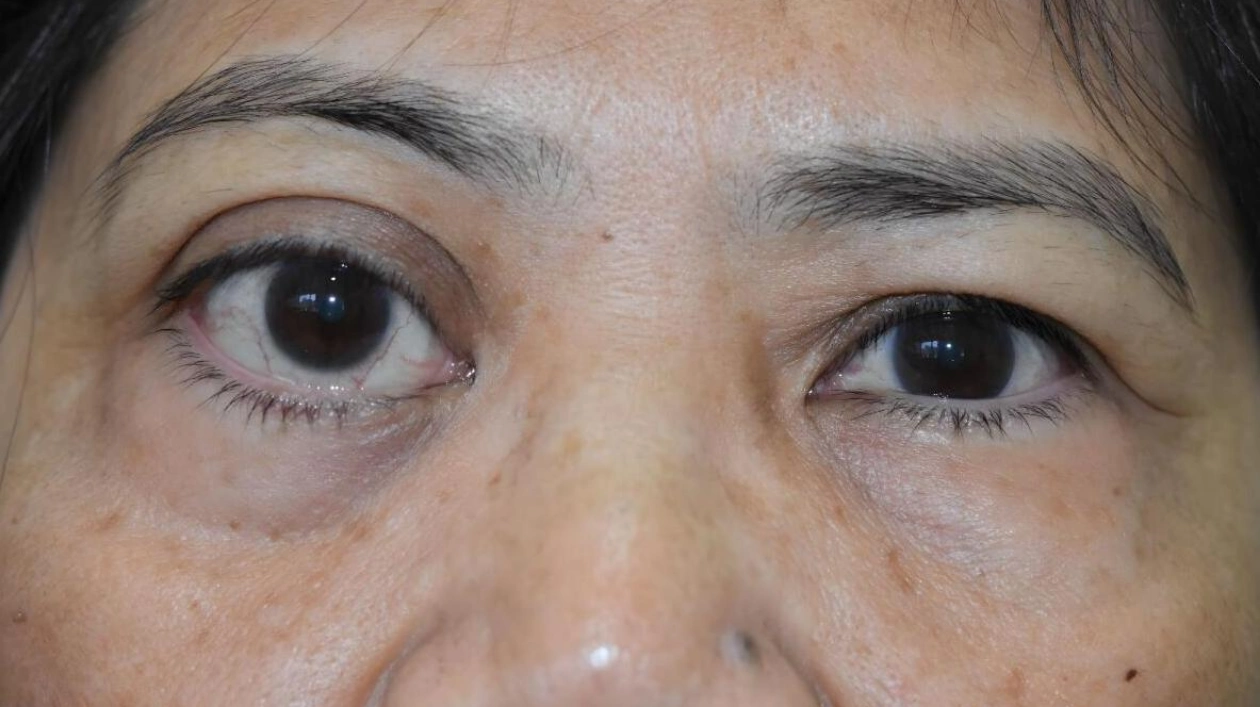A significant tumour — larger than her eyeball — was successfully extracted from behind the right eye of a 58-year-old woman, following a one-hour minimally invasive surgery that saved her from blindness. Speaking to Khaleej Times over the weekend, Filipina expatriate Maria shared: “I can see much better now with both eyes. Previously, I couldn’t see out of my right eye, and every morning, I felt discomfort when opening my eyes. My vision in the right eye was deteriorating, making it hard for me to see clearly.” The procedure was performed a few months ago at Medcare Hospital in Sharjah.
“The patient experienced vision loss and a heavy sensation around her right eye for nearly a month before consulting an ophthalmologist,” explained Dr. Fairooz P.M., an oculoplastic surgeon and eye cancer specialist. “An MRI and CT scan revealed a well-defined oval intraconal lesion in the right orbit, suggesting a cavernous hemangioma (vascular tumour). A large tumour measuring 35x30 mm — larger than her 24mm eyeball — was successfully removed,” said the surgeon who led the surgical team.
Dr. Fairooz noted that cavernous hemangioma is a benign vascular tumour, one of the most common benign tumours in the eye orbit. It grows slowly but can cause vision loss or blindness if located near the optic nerve. In Maria’s case, the tumour was pressing on the optic nerve, endangering her sight.
Before the surgery, the tumour caused the eye to bulge and threatened Maria’s vision by compressing the nerve at the back of the eye. A micro-incision internal orbital surgical approach was used, a first for the hospital, according to Dr. Fairooz.
“I started noticing changes in my eye size in my 30s, when I moved to Dubai 24 years ago,” Maria recalled. “My eyes felt uncomfortable upon waking. I wore glasses to hide the difference in my eye size. However, it worsened recently, and I began having vision issues, prompting me to consult an ophthalmologist.”
“Following the successful surgery, the doctors assured me the tumour won’t return. Given my age, Dr. Fairooz recommended cataract surgery to prevent cloudy vision, typical in older individuals,” added Maria, who has four adult children in the Philippines.
“With my improved eyesight, I can continue working for an events company and watch my grandchildren grow,” she said.
According to the John Hopkins Medical Journal, “cavernous malformations can’t be prevented currently. Researchers hope that understanding the genes linked to these growths could lead to prevention.”
Dr. Fairooz explained, “Cavernous hemangioma is one of the most common orbital tumours, accounting for 20% of all orbital masses. While usually painless and slow-growing, they can pose serious risks when near critical structures like the optic nerve, potentially threatening vision.”
“Diagnosing and managing orbital tumours, especially those affecting visual function, presents significant challenges to surgeons. Timely and precise intervention is crucial to prevent severe complications like vision loss,” she emphasized.
Dr. Fairooz also highlighted that this was the first time such a procedure was performed at their hospital. “We are delighted the patient responded well to the surgery and has fully recovered. The multidisciplinary approach by the medical staff was essential to the success of this complex procedure,” she added.






